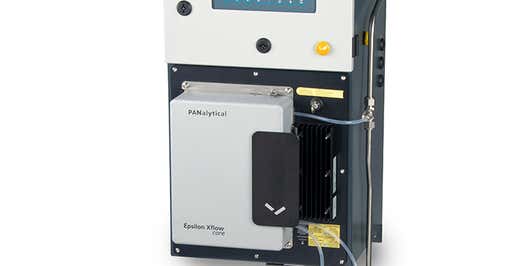What is Fuel Analysis?
Fossil fuels, biofuels and mixtures are natural products and therefore the composition is dependent on many factors, like location, time, blend ratios and many more. Analysis is needed to ensure proper working of many different combustion engine types and trading of fuels. Therefore fuel analysis is a necessity and the process of testing and analyzing fuel - the fuel analysis - determines the fuel composition, quality, and suitability for various applications. The fuel analysis ensures that fuels meet regulatory and environmental standards, as well as the specific needs of businesses and consumers. ASTM International and ISO are important Standard Development Organizations for fuel quality and analysis. Our longstanding involvement in these SDOs enable you to comply with these standards.
Fuel quality is an essential aspect of fuel analysis, as it can have significant impacts on equipment performance, emissions, and profitability. Additionally, environmental regulations require that certain types of fuels meet specific standards for emissions, such as sulfur content. The new marine fuel regulation IMO, new lubriction oil types for electrical cars and the Sustainable Aircraft Fuel (SAF) are examples of recent developments.
There are several types of fuel analysis, including chemical analysis, physical analysis, and performance testing. Chemical analysis involves measuring the characteristics and composition of fuels, such as their sulfur, content. Physical analysis focuses on the physical properties of fuels, such as their viscosity, flash point, corrosivity and density. Performance testing involves evaluating the performance of fuels in specific applications, such as engine testing.
Accurate and reliable fuel analysis is critical for businesses and organizations in the fuel industry, as it helps ensure that fuels meet the necessary quality standards and regulatory requirements which are globally agreed on by national regulation bodies and translated into internationally accepted ASTM International or ISO test methods.
Analysis methods
There are several methods used for fuel analysis, with some of the most common being gas chromatography, UV fluorescence spectroscopy, and X-ray fluorescence analysis. These methods are designed to provide accurate and reliable analysis of fuel samples, and are critical for ensuring that fuels meet the necessary quality standards and regulatory requirements.
X-ray fluorescence is a non-destructive method used for fuel analysis, which involves bombarding a fuel sample with X-rays and then measuring the resulting X-ray fluorescence emissions. This method is particularly useful for measuring the elemental content of fuels, such as sulfur and chlorine as the most important ones.
Accurate and reliable testing equipment is critical for ensuring that fuel analysis is conducted in compliance with international regulations and test methods so that the results can be trusted.
How to check fuel quality?
Checking fuel quality is an essential aspect of fuel analysis, as it helps ensure that fuels meet the necessary quality standards and regulatory requirements. The fuel quality testing process typically involves fuel sampling, preparation, and testing using specialized fuel analysis laboratory equipment.
Fuel sampling involves collecting a representative sample of the fuel to be tested, using proper sampling procedures and equipment to prevent contamination or other issues.
Testing the fuel sample involves using specialized fuel analyzers to measure various characteristics of the fuel, such as its sulfur and chlorine content, density, viscosity, and flash point.
Our range of specialized fuel analysis laboratory equipment, including the Epsilon 1 Ultra Low Sulfur and Zetium Petro instruments, are designed to provide fast, accurate, and reliable analysis of sulfur, chlorine and other important chemical elements in fuels. These instruments use advanced X-ray fluorescence technology to analyze fuel samples quickly and with minimal sample preparation.
Using specialized fuel analysis laboratory equipment is critical for accurate and reliable results, as it ensures that the fuel samples are analyzed using national and/or Internationally accepted Standard Test methods. This is particularly important in industries where fuel quality is essential, such as in the automotive, marine, and energy sectors.
Our instrumentation
New and improved sensitivity for compliant analysis without helium: Live demonstration analyzing sulfur in automotive fuels
The Epsilon 1 Sulfur in Fuels and Epsilon 1 Ultra Low Sulfur and Epsilon Xflow instruments are advanced Energy Dispersive X-ray Fluorescent (EDXRF) Analyzers, while the Zetium industry versions are Wavelength Dispersive X-ray Fluorescent (WDXRF) analyzers. These instruments are designed for fast, accurate, and reliable analysis of sulfur, chlorine, nickel, vanadium, manganese and many other elements in fuels.
Today, this is of particular importance because more and more spot-crude is traded. Spot-crude oil, generally speaking, contains higher concentrations of sulfur and other elements like nickel and vanadium. These instruments are ideal for use in fuel analysis laboratories or plants, where they can provide precise measurements of fuel quality in a matter of minutes.
The Epsilon 1 Sulfur in Fuels instrument is designed to measure sulfur content in a range of liquid and solid fuels, including diesel, gasoline, and heavy fuel oils. It uses advanced X-ray fluorescence technology to analyze the fuel samples quickly and with minimal sample preparation, providing accurate and reliable results.
The Epsilon 1 Ultra Low Sulfur instrument is specifically designed for the analysis of fuels. It analyzes ultra-low sulfur and low levels of chlorine next to high levels of sulfur in automotive gasoline and bio- and fossil- fuels. It uses the same advanced X-ray fluorescence technology as the Epsilon 1 Sulfur in Fuels instrument to provide fast, accurate, and reliable analysis.
The Zetium Petro is the industry standard and has a well-establish name in the oil and fuel industry due to its accuracy and robustness physically and in its results. The Zetium Petro edition is specially designed for the Petrochemical industry and is compliant with the most important international regulations and test methods. It is often used as an 'umpire/referee' in disputes on compliance and concentration.
Our longstanding participation in SDOs helps you to comply easily with important ASTM International, ISO and other national regulations and standards compliance
Using the Epsilon 1 Sulfur in Fuels and Epsilon 1 Ultra Low Sulfur and Epsilon Xflow instruments in fuel analysis laboratories offers a range of benefits, including:
- Fast analysis times: These instruments provide results quickly, enabling fuel analysis laboratories to increase their throughput and efficiency.
- Accurate and reliable results: The advanced X-ray fluorescence technology used in these instruments ensures that the fuel samples are analyzed using precise and reliable methods, providing accurate results.
- No sample preparation for the Epsilon Xflow in-line analyzer, and minimal sample preparation for the Epsilon 1: These instruments require minimal sample preparation, reducing the time and effort required to prepare fuel samples for analysis.
- Regulatory compliance: The Epsilon 1 Sulfur in Fuels and Epsilon 1 Ultra Low Fuels instruments help businesses and organizations ensure that their fuels meet the necessary regulatory requirements, such as those related to sulfur content in fuels. The Zetium is often used as the final truth in compliance issues and disputes. Decades of experience in this field and our market leader status make the Zetium Petro the ultimate choice. See brochure for these standards.
- Future regulations: our involvement in standardization bodies means we can prepare you for future regulation. An example is the Epsilon 1 ULS compliance to updated ISO 13032, coming into effect Q4 2023. The update now includes biofuels in the scope, and our innovative vanadium x-ray tube now allows you to comply with this test method without the need for helium.
Featured products





